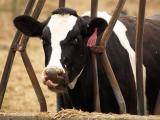May 6, 2009 (CIDRAP News) The World Health Organization (WHO) will convene a group of experts May 14 to advise the agency on whether to pull the trigger on production of a vaccine for the novel H1N1 swine influenza virus, a WHO official announced today.
The experts will be asked if there's enough evidence to warrant a WHO recommendation for manufacturers to start large-scale manufacturing of a vaccine for the new virus, said Dr. Marie-Paule Kieny, director of the WHO's Initiative for Vaccine Research, in a news teleconference in Geneva.
For some vaccine makers, that would mean curtailing production of the seasonal flu vaccine for the northern hemisphere, since not all manufacturers have finished production. A WHO recommendation to do that could come in a few weeks, Kieny said.
"What we've recommended for the timing at present was for all manufacturers to put everything in place to be able to start manufacturing vaccine," she said.
The US Centers for Disease Control and Prevention (CDC) and other WHO collaborating centers are developing seed strains of virus for use in H1N1 vaccines. "We expect these will be available to manufacturers most likely in the second half of May," Kieny said.
The decision whether to recommend production will depend on the accumulating epidemiologic evidence about the virus, including how much of the population is likely to get sick and how severe the illness is, she said. And if the recommendation is made, it will be up to the manufacturers to decide whether to go ahead.
"The decision is not that of WHO; the decision will be the manufacturers' to take," she said.
Kieny said "the vast majority" of manufacturers would need 5 to 6 months (from the identification of the virus) to begin producing a vaccine in quantity, but a few manufacturers might be able to start providing vaccine in as little as 4 months.
Last week Kieny said some of the vaccine manufacturers had completed about 60% of their production of the seasonal flu vaccine and that WHO officials were talking with them about the best time to switch from making seasonal vaccine to a swine flu vaccine.
In response to questions today, she said some manufacturers might be able to make seasonal and swine flu vaccines at the same time, using different production facilities. "You can't make two vaccines in the same plant at the same time," but some companies have more than one facility, she commented.
Kieny offered an estimate today of global capacity to make a vaccine for the novel virus: somewhere between 1 billion and 2 billion doses in a year, based on an estimated seasonal vaccine capacity of about 900 million doses. Current world population is more than 6 billion.
"Being conservative, we think there'll be at least between 1 and 2 billion doses," she said.
She acknowledged that she previously mentioned an estimate of 700 million doses for seasonal vaccine production. She explained that the 900 million estimate is based on manufacturers' figures and added that vaccine plants are under construction in several countries, increasing capacity month by month.
Kieny also acknowledged that multiple unknowns will govern how many doses can be produced and how many will be needed.
For one thing, most of the vaccine will have to be grown in eggscell-based flu vaccine production is not mature enough to make much of a contributionand no one knows how well the vaccine virus will grow in eggs, she said.
In addition, no one yet knows what size dose will be necessary, whether an adjuvant will be needed, and whether each person will need one dose or two, Kieny reported.
It's generally understood that with novel flu viruses, to which people have little or no immunity, two doses of vaccine may well be necessary. That's true of H5N1 avian influenza vaccines, Kieny noted, but she said, "We hope that one dose will be sufficient [for the swine flu virus]. Before we know that, it's very difficult to say how many doses will be available."
In other comments, Kieny reported that the WHO director-general and the secretary-general of the United Nations will meet with vaccine company executives on May 19 to discuss how to ensure "equitable access for all countries" to any H1N1 vaccine.
"It will be a high-level meeting appealing for corporate responsibility and equitable access," she said.
The officials will discuss the potential procurement by agencies such as the United Nations Children's Fund and the Pan American Health Organization of vaccine for developing countries, she said.
Kieny was asked if any vaccine would be available for poor countries, given that a number of governments have contracts with manufacturers for large amounts of any pandemic vaccine produced.
"We are well aware and are not hiding the fact that manufacturers have agreements with a number of governments to provide access to a vaccine," she said. "We are discussing with the manufacturers where they are in terms of filling up their books . . . and what may still be available. Some vaccine may still be available in the early weeks or months of production."
She added that most vaccine makers "still have some window of opportunity in their orders, and we want to make sure we don't wait until that window is completely closed."
In response to further questions, Kieny said she didn't know "with any kind of precision" what fraction of potential pandemic vaccine production is already reserved.
"It's not at all that we're hiding anything," she said. "The reason nobody is answering this is that we don't know."
See also:
WHO press briefings on swine flu
http://www.who.int/mediacentre/multimedia/swineflupressbriefings/en/index.html
May 1 CIDRAP News story "Path to swine flu vaccine has major hurdles"



















